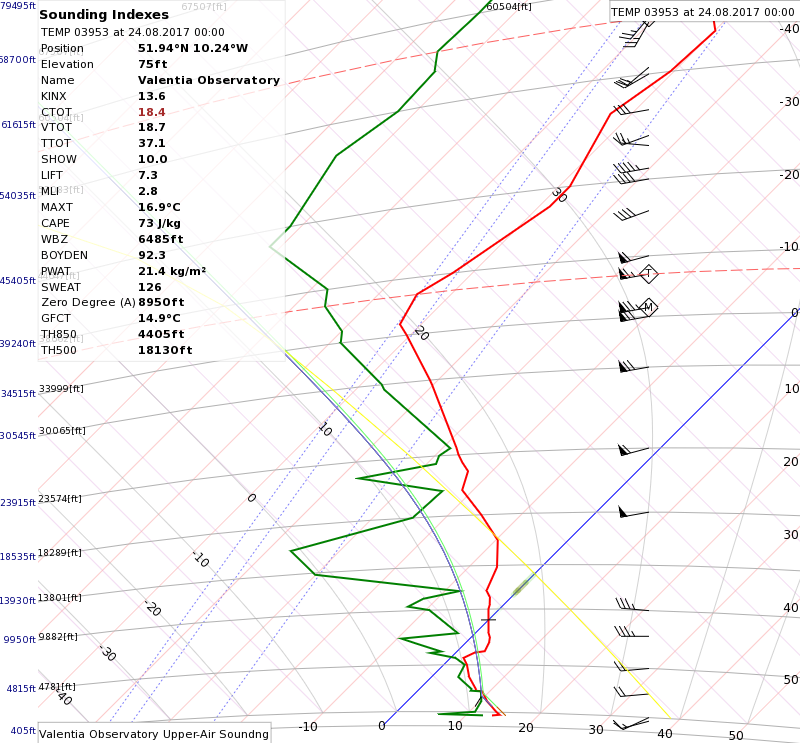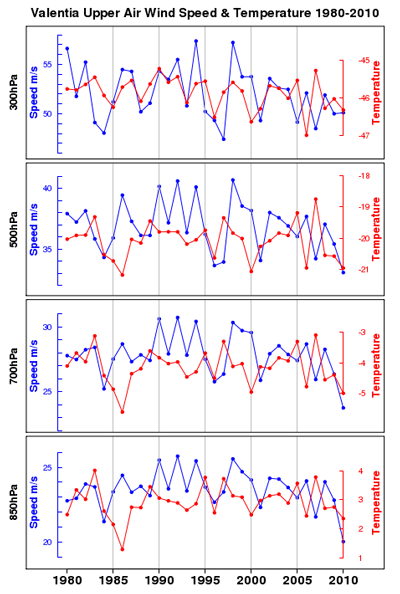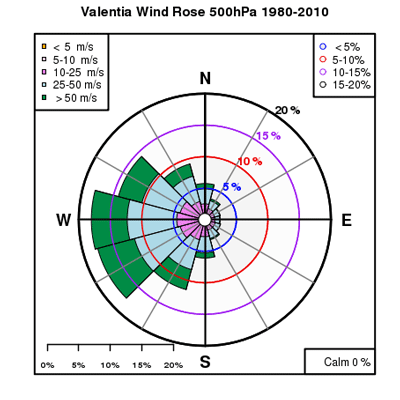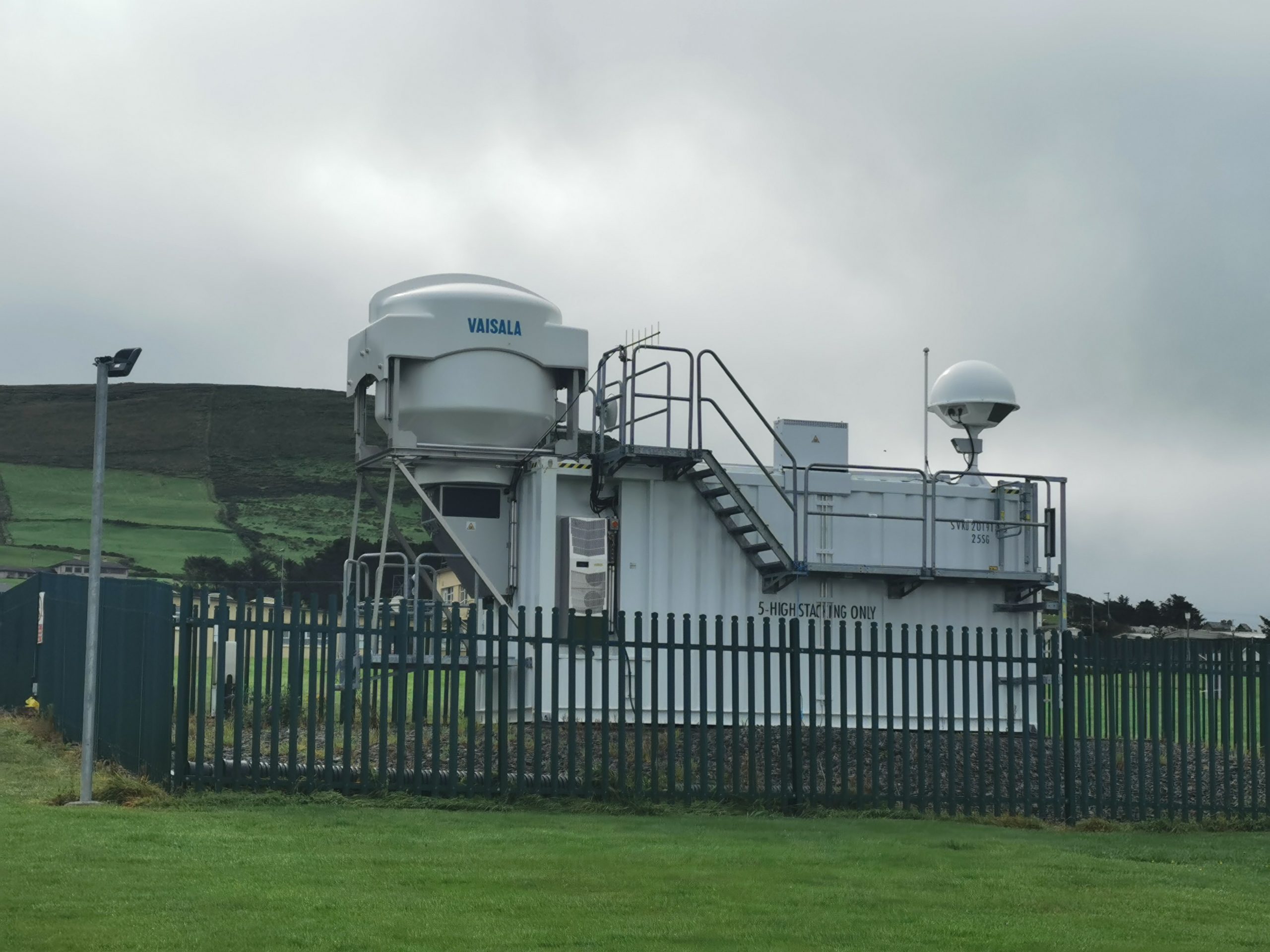Upper Air Wind and Temperature
Measurements
Since the atmosphere is three dimensional, there is also a requirement to take readings of essential variables above the surface. Measurements in the upper atmosphere are important as they give vital information on the vertical profiles of wind and temperature in the atmosphere. The data is essential across a wide range of applications including Climate and Environmental research and monitoring, weather forecasting and the aviation industry. There are far fewer sites taking upper air than surface measurements , which adds to the critical importance of upper air measuring sites.
Upper air measurements have been taken at Valential Observatory since 1943 by means of a radiosonde, this is a hydrogen filled balloon with instruments attached. The balloon is released into the atmosphere and as it ascends readings are transmitted back to the surface station. As the balloon ascends it expands until it eventually bursts.

Valentia Upper Air Sounding
The instruments measure pressure wind speed and direction, dry and wet bulb temperatures twice a day at midday and midnight. The measurements are taken at standard levels in the atmosphere, usually at defined pressure levels, such as 850, 700, 500 and 300 hPa. This enables the production of tephigrams, ‘snapshots’ of the vertical structure of the atmosphere.
Time Series and Trends:
Digital data is available from 1980, plots of mean annual wind speed and temperature at a number of pressure levels are shown here.

Valentia Upper Air Wind Speed and Temperature
The predominant wind direction is from the west sector, as can be seen in the wind rose diagram for winds at the 500hPa pressure level.

Valentia 500 hPa windrose
